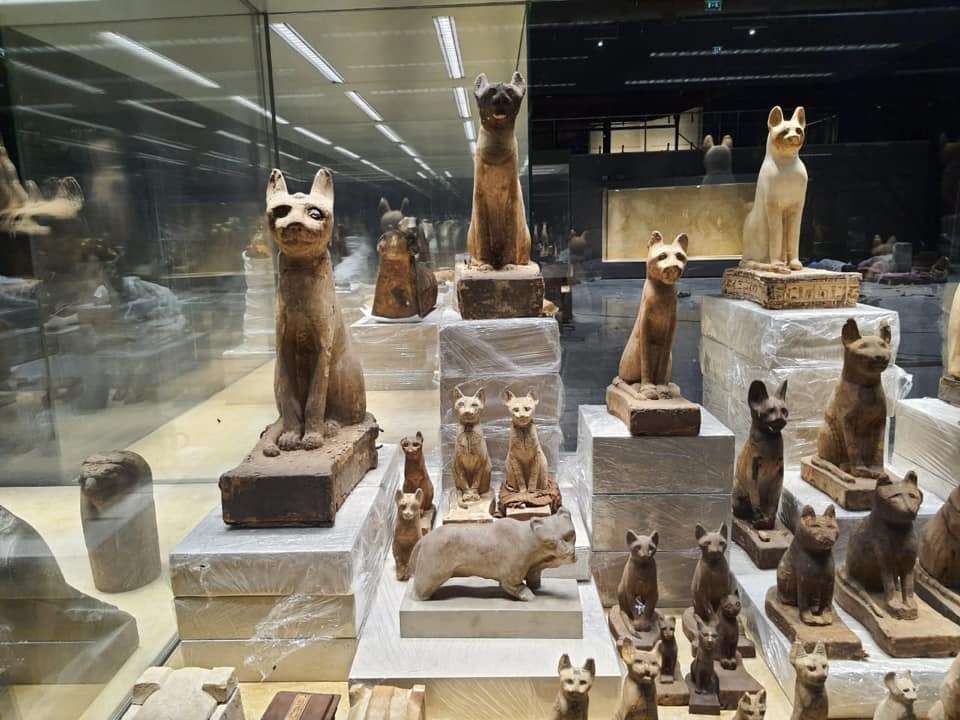These days, the Museum of Sharm El-Sheikh looks like a beehive, where archaeologists and restorers of the Supreme Council of Antiquities are working in full swing to finish finalizing its museum in accordance with the preset scenario.
Museum of Sharm El-Sheikh reflects the different aspects of the Egyptian civilization by displaying a selection of artifacts that were carefully chosen from the museum stores in Manial Palace, Kom Ushim, Saqqara, Suez, Ismaili, Greek Roman Museums in Alexandria and the Egyptian Museum in Tahrir, as well as the stores of the city of Luxor and Minya.
Brigadier Hisham Samir, assistant minister for engineering affairs, said that all construction works and lighting units have been completed, as well as experiments in the alarm system, security protection and fire fighting.
Moammen Othman, head of the museums sector at the Minacity of Antiquities, said that the Museum of Sharm El Sheikh has received about 5,500 artifacts so far, whether it will be distributed inside two exhibition halls or free outside, on three halls, namely the Great Hall, the Hathour Corridor, and the cemetery area, which will open soon.
https://www.facebook.com/moantiquities/posts/3262320817146879
Othman indicated that the work of the display windows and their lighting systems had been completed in a way that works to show the aesthetic aspect of the artifacts, and the work is underway within the Great Hall, and preparing the two chariots of Dahshur for display by the restoration team of the Supreme Council of Antiquities.
The path of the visit was also determined in proportion to the museum's display of the artifacts, and in our way to complete the cards, banners and display screens.
Othman added that it was named after Goddess Hathor because there are a large number of pieces belonging to it alongside some statues of the kings, Tuthmosis I, Hatshepsut, Nakhtnabo, Ramses II and Ramses III.
He pointed out that the cemetery area is a simulation of a complete antique cemetery with all its details and the artifacts it contains, which will be placed with the owner of the cemetery.
It contains an imaginary door dating back to the era of the Old Kingdom, the inner and outer sarcophagus of Est m "East Umm Khub", wife of Banjam II and the priestess of the goddess Isis, a number of Ashhabti statues and canopic vessels, a statue of the god Osiris, a papyrus papyrus, and a cartoon covering the body of the deceased.
Dr. Mahmoud Mabrouk, Advisor to the Minister of Antiquities for the Museum exhibit, said that the Great Hall expresses human and wildlife in ancient Egypt, by displaying a number of paintings representing the Egyptian family in different historical stages.
It also includes a group of statues of Sphinx representing the animal body with the human face, and a statue of a man next to his small daughter, in addition to a number of sacred animals in ancient Egypt such as cats and scarabs of various shapes and sizes, which were discovered in 2019 in the area of Saqqara monuments.
Contributed by Ahmed Moamar






















